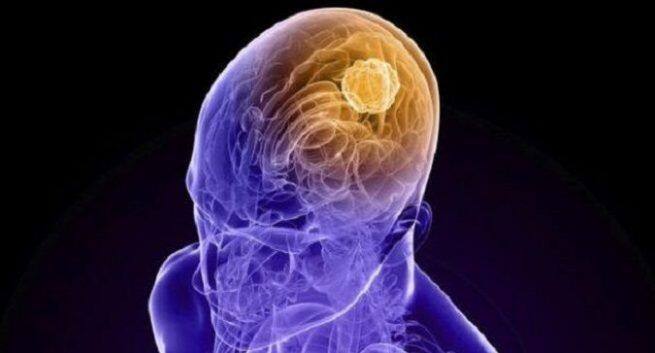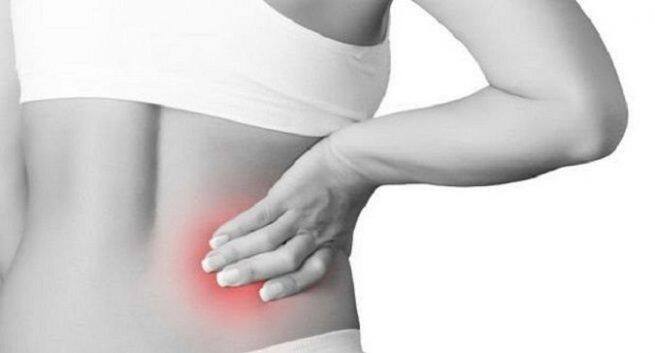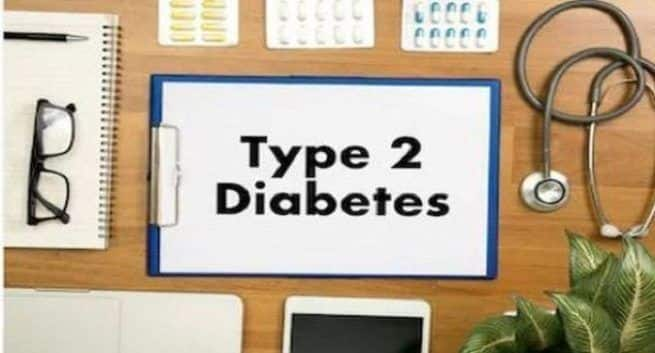It also helps in the treatment of diarrhoea that is researchers concluded that is able to prevent bacteria and drugs that can cause diarrhoea from being absorbed into the human body by trapping them on its porous,textured surface.
Wednesday, December 11, 2019
It also helps in the treatment of diarrhoea that is researchers concluded that is able to prevent bacteria and drugs that can cause diarrhoea from being absorbed into the human body by trapping them on its porous,textured surface.

Treating pimples on the face
- Wash the affected area with a gentle cleanser. Pat the area dry with a clean towel.
- Apply a spot treatment that can dry out the pimple. Examples of spot treatments include tea tree oil, benzoyl peroxide, or salicylic acid. Apply to the pimple and area around it, using clean hands, to target the pore and oil builtup underneath.
- If a person does not have any spot treatments available, they can try home remedies instead. Examples of these include crushing an aspirin and mixing it into a paste with a small amount of water. Applying calamine lotion may also help to dry out the lesion.
- Consider specialized spot treatments or masks that you apply directly to the pimple. Examples include clay masks for acne blemishes, or acne "dots." Acne dots are patches that cover blemishes and contain drying solutions, such as tea tree oil or salicylic acid.
Treating pimples on the body
- Using a body wash that contains benzoyl peroxide. The American Academy of Dermatology (AAD)recommend leaving the body wash on the chest or back for 2–5 minutes before rinsing. If a person has sensitive skin, they can use a 5.3% benzoyl peroxide solution. Those with very oily skin may use as much as a 10% solution.
- Applying a 0.1% adapalene gel to any skin lesion areas. A person can purchase this gel over the counter. If someone has difficulty reaching their back to apply the gel, they can buy a device to apply the medicine.
- Changing clothing immediately after exercising to reduce sweat and oil buildup. If an individual cannot shower immediately after exercising, wiping the skin with a cleansing wipe or flannel can help.
- Refraining from picking or scratching pimples. Picking at pimples can make them worse and increase the risk of more severe symptoms.
- Using oil-free sunscreens when in the sun. Manufacturers sometimes label oil-free products as noncomedogenic. Using these can help prevent oil building up under the skin.
- Always using oil- and fragrance-free lotions. Avoiding oils and fragrances on acne-prone areas of the body can reduce the likelihood for body acne breakouts.
China,India,United States,Indonesia,Pakistan,Brazil,Nigeria,Bangladesh,Russia,Mexico,us,canada,italy,japan,philipines,ethiopia,egypt,vietnam,Germany,Congo, Dem. Rep.Germany,Iran,Turkey,France,Thailand,United Kingdom,Italy,South Africa,Tanzania,Myanmar,Kenya,South Korea,Spain,Colombia,Argentina,Algeria,Ukraine,Sudan,Uganda,Iraq,Poland,Canada,Morocco,Saudi Arabia,Uzbekistan,Malaysia,Peru,Venezuela,Afghanistan,Angola,Nepal,Yemen,Mozambique
China,India,United States,Indonesia,Pakistan,Brazil,Nigeria,Bangladesh,Russia,Mexico,us,canada,italy,japan,philipines,ethiopia,egypt,vietnam,Germany,Congo, Dem. Rep.Germany,Iran,Turkey,France,Thailand,United Kingdom,Italy,South Africa,Tanzania,Myanmar,Kenya,South Korea,Spain,Colombia,Argentina,Algeria,Ukraine,Sudan,Uganda,Iraq,Poland,Canada,Morocco,Saudi Arabia,Uzbekistan,Malaysia,Peru,Venezuela,Afghanistan,Angola,Nepal,Yemen,Mozambique
Thursday, August 29, 2019
Sunday, August 25, 2019

Quitting cigarette smoking is associated with a significantly reduced risk of bladder cancer in postmenopausal women, suggests a study.
According to the research published in the journal ‘Cancer Prevention Research’, the most significant reduction in risk occurred in the first 10 years after quitting, with a modest but continued decline in later years.
“Smoking is a well-established risk factor for bladder cancer, but findings on the relationship between duration of smoking cessation and the reduction in bladder cancer risk are inconsistent,” said Yueyao Li, the study’s author.She added that while bladder cancer is more common in men, women often have worse outcomes, even when diagnosed at similar stages.
“Our study emphasizes the importance of primary prevention (by not beginning to smoke) and secondary prevention (through smoking cessation) in the prevention of bladder cancer among postmenopausal women,” Li said. “Current smokers should be advised to quit smoking in order to reduce the risk of bladder cancer.”
In this study, Li and colleagues sought to analyze the dose-response relationship between time since quitting smoking and risk of bladder cancer among postmenopausal women and to investigate whether risk among former smokers ever normalised to the risk faced by those who never smoked.
The study included data from 143,279 women, all of whom had supplied information on whether they had ever smoked cigarettes, how much they had smoked, and whether they were current smokers. In all, 52.7 per cent of the women were categorised as “never smokers,” 40.2 per cent as former smokers, and 7.1 per cent as current smokers.
It showed that in comparison to never smokers, former smokers had twice the risk of bladder cancer, and current smokers had more than three times the risk.
They found that the steepest reduction in risk occurred in the first 10 years after quitting smoking, with a 25 per cent drop. The risk continued to decrease after 10 years of quitting, but even after 30 or more years since quitting smoking, the risk remained higher for women who had smoked than those who never did.
However, in time-updated models that reflected those who stopped smoking during the study period, the researchers found that compared with women who continued to smoke, those who quit smoking during the follow-up years had a 39 per cent decrease in bladder cancer risk, and the risk continued to decline over time.
Li said that while the biological mechanisms of the association between bladder cancer and smoking are not known, the study results indicate that women of any age should be discouraged from smoking, and even those who have smoked for many years stand to benefit from quitting.
Li cautioned that the study was based on postmenopausal women, so results may not be fully generalisable. Also, exposure to smoking was self-reported.

People suffering from insomnia may have a higher risk of coronary artery ailment, heart failure, and stroke, suggests a study.
The study was published in the journal Circulation.
Previous observational studies have found an association between insomnia, which affects up to 30 per cent of the general population, and an increased risk of developing heart disease and stroke.However, the observational studies were unable to determine whether insomnia is a cause, or if it is just associated with them, explained Susanna Larsson, lead author of the study.
In this first-of-its-kind study on insomnia, Larsson and a colleague applied Mendelian randomisation, a technique that uses genetic variants known to be connected with a potential risk factor such as insomnia, to reduce bias in the results.
The 1.3 million participants with or without heart disease and stroke were drawn from four major public studies and groups.
Researchers found genetic variants for insomnia were associated with significantly higher odds of coronary artery disease, heart failure, and ischemic stroke, particularly large artery stroke, but not atrial fibrillation.
“It is important to identify the underlying reason for insomnia and treat it,” Larsson said. “Sleep is a behaviour that can be changed by new habits and stress management.”
A limitation of this study is that the results represent a genetic variant link to insomnia rather than insomnia itself. According to Larsson, it was not possible to determine whether or not individuals with cardiovascular disease had insomnia.

Researchers have discovered a new pathway that can attack and improve survival rate in an incurable type of brain cancer among children.
The study published in the journal ‘Nature Communications,’ suggested that the pathway disrupts the cellular process that contributes to Diffuse Intrinsic Pontine Gliomas (DIPG).
DIPG is a highly aggressive and inoperable type of tumour that grows in the brain stem and usually strikes children less than 10 years old. Most patients do not survive more than a year after diagnosis.Earlier studies identified a genetic mutation called PPM1D — which is critical for cell growth and cell stress response –as a contributor to DIPG. Previous efforts to directly attack the PPM1D mutation, however, proved futile in controlling DIPG.
This study has discovered a vulnerability in the metabolic process for creating NAD, a metabolite that is necessary for all cell life.
“This is really an amazing new way to attack this cancer. We found that the mutated gene PPM1D essentially sets the stage for its own demise,” said Michael Berens, one of the study’s senior authors.
Researchers found that mutated PPM1D silences a gene called NAPRT, which is key to the production of the NAD metabolite. With NAPRT unavailable, the cell switches to another protein needed to create NAD called NAMPT. By using a drug that inhibits the production of NAMPT, researchers found they could essentially starve to death those cancer cells with the PPM1D mutation.
Researchers had long thought DIPG was a childhood version of adult brain tumors, and so similar treatments for adult gliomas were tested extensively in children and failed.
The researchers chose to look at the tumour in terms of its potential vulnerabilities, and thus began a year-long molecular journey to understand what role the PPM1D mutation played in altering cancer metabolism.
“When epigenetic silencing results were analysed, we were gratified to discover that DIPG cells with the PPM1D mutation had created a vulnerability to a key enzyme for which small molecule inhibitors were already available,” said Sen Peng, one of the study’s contributing authors.
Saturday, August 24, 2019

Facial pain may be a symptom of headaches as researchers have found that up to 10 per cent of people with headaches also suffer from facial pain.
“Facial pain has not been well recognised as a symptom of headache and some people end up waiting a long time for a proper diagnosis and treatment,” said study author Arne May from the University of Hamburg in Germany.
“This study shows that facial pain is not uncommon, and for many people their pain occurs mainly in the face, not the head,” May said.
Published in the journal Neurology, the study involved 2,912 people with primary headaches – headaches not due to another condition and include migraine and cluster headaches.
Participants were asked to fill out questionnaires about their headaches and facial pain.
Of the study participants, 291 people — 10 per cent had facial pain. Only 2 per cent — 44 of the 1,935 people with migraine had facial pain. Of those, 41 per cent experienced pain predominantly in the face.
Among people with cluster headache, 15 per cent or 42 of 283 people, had facial pain. Of those, 31 per cent had pain mainly in the face.
Also, facial pain affected 21 per cent of the 42 people with hemicrania continua — a rare type of headache with continuous pain that varies in severity.
In another rare type of headache, called short-lasting unilateral neuralgiform headache, 20 per cent of the 15 people in the study had facial pain. This type of headache involves very frequent attacks on one side of the head.
The researchers also reported on six people who had constant facial pain on one side of the head only in addition to facial pain attacks lasting 10 to 30 minutes and occurring several times a day.
Researchers said this type of pain syndrome has not been described before and they proposed calling it constant unilateral facial pain with added attacks.

Popping even a single course of antibiotics might increase, though slightly, the risk of developing colon cancer a new study suggests. The study published in the journal Gut highlighted the need for judicious use of this broad category of drugs, which are frequently improperly or overprescribed.
“The primary message of this study is the importance of antibiotic stewardship: not treating common viral infections with antibiotics, using them for the shortest time period possible, and using targeted antibiotics rather than broad-spectrum ones,” said study leader Cynthia L. Sears, Bloomberg Kimmel Professor of Cancer Immunotherapy at the Johns Hopkins Kimmel Cancer Center.
“This research adds to our understanding that these drugs can have significant off-target effects, including the induction of chronic illnesses,” added Sears.
Sears and Jiajia Zhang, a researcher from the same institute, along with their colleagues mined data from the Clinical Practice Research Datalink (CPRD), that holds information on more than 11 million patients in the United Kingdom.
Focusing on a 23-year period from January 1, 1989, to December 31, 2012, the researchers found 28,890 cases of colorectal cancer. They matched each of these patient records with up to five healthy “controls” who never developed this disease, but who had similar characteristics, including age, gender, and where their general practitioner practiced, for a total of 137,077 “control” cases for comparison.
They then used the medical records to identify and evaluate each case history for colorectal cancer risk factors, such as a history of obesity, smoking, alcohol use, and diabetes, as well as antibiotic use.
The researchers found that those who developed colon cancer were slightly more likely to have been exposed to antibiotics (71.3 per cent compared to 69.1 per cent). Those with rectal cancers did not show that association and had about the same antibiotic exposure compared to healthy subjects.
Further investigation showed that antibiotic exposure was only associated with increased risk of approximately 15 per cent for cancer in the proximal colon (the first and middle parts of the colon) but not the distal colon (last part of the colon), and this risk happened particularly after exposure to classes of antibiotics that kill anaerobic bacteria, such as those in the penicillin family.
Among the compelling findings, the researchers said, was the rapid onset of increased colon cancer risk, beginning with only 15-30 days of total antibiotic exposure (approximately 8 per cent increased risk with 15-30 days of total antibiotic exposure and approximately 15 per cent increased risk with 30 or more days of total antibiotic exposure).
However, the association was reversed for rectal cancer: the more total antibiotic exposure, specifically total exposures of 60 days or more, the less likely they were to have cancer in this location. Cancers that developed in the colon were linked with antibiotic exposure at least 10 years earlier. There was no increased risk with exposures less than 10 years prior.

Drinking pomegranate juice during pregnancy may improve brain development and connectivity in unborn babies.
Pomegranate juice is a particularly rich source of polyphenols which are known to cross the blood-brain barrier.
Polyphenols, which include tannic acid and ellagitannins, are part of a class of antioxidants found in many foods and beverages, including nuts, berries, red wine and teas.
“Our study provides preliminary evidence suggesting potential protective effects for newborns exposed to pomegranate juice while in the womb,” said study senior author Terrie Inder from Brigham and Women’s hospital in the US.
“These findings warrant continued investigation into the potential neuroprotective effects of polyphenols in at-risk newborns, such as those with hypoxic-ischemic injury,” Inder said.
In the study published in the journal PLOS One, the team presents its preliminary findings from a clinical trial of expectant mothers whose babies were diagnosed with intrauterine growth restriction (IUGR).
In cases of IUGR, a baby in the womb measures small for its gestational age, often because of issues with the placenta, which brings oxygen and nutrients to the growing foetus. One out of every 10 babies is considered to have IUGR.
The current randomised, controlled study enrolled 78 mothers with IUGR diagnosed at 24-43 weeks’ gestation.
Women were randomised to receive eight ounces of pomegranate juice daily or a taste/calorie matched placebo that was polyphenol free. Women drank the juice daily from enrolment until delivery.
The team measured several aspects of brain development and injury, including infant brain macrostructure, microstructural organization and functional connectivity.
While the team did not observe differences in brain macrostructure, they did find regional differences in white matter microstructure and functional connectivity.
“These measures tell us about how the brain is developing functionally. We saw no difference in brain growth and baby growth, but we did see improvement in cabling network and brain development measured by synchronous blood flow and visual development of the brain,” Inder said.
Friday, August 23, 2019

“Acupressure is similar to acupuncture, but instead of needles, the pressure is applied with a finger, thumb or device to specific points on the body,” said Susan Murphy, ScD, OTR, an associate professor of physical medicine, rehabilitation at Michigan Medicine and lead author of the study. Murphy said that while acupressure has been previously studied and found to be beneficial in people with cancer-related or osteoarthritis pain, there are a few studies that examined acupressure in people with lower back pain.
In the study, published in the journal, ‘Pain Medicine,’ the research team randomly assigned 67 participants with chronic low back pain into three groups: relaxing acupressure, stimulating acupressure or usual care.
“Relaxing acupressure is thought to be effective in reducing insomnia while stimulating acupressure is thought to be effective in fatigue reduction,” Murphy said.
Participants in the acupressure groups were trained to administer acupressure on certain points of the body, and spent between 27 and 30 minutes daily, over the course of six weeks, performing the technique.
Participants in the usual care group were asked to continue whatever treatments they were currently receiving from their care providers to manage their back pain and fatigue.
“Compared to the usual care group, we found that people who performed stimulating acupressure experienced pain and fatigue improvement and those that performed relaxing acupressure felt their pain had improved after six weeks,” Murphy said.
“We found no differences among the groups in terms of sleep quality or disability after the six weeks,” she continued.
Murphy noted that chronic pain is difficult to manage and people with the condition tend to have additional symptoms such as fatigue, sleep disturbance, and depression.
“Better treatments are needed for chronic pain. Most treatments offered are medications, which have side effects, and in some cases, may increase the risk of abuse and addiction,” Murphy said.
She said this study highlights the benefits of a non-pharmacological treatment option that patients could perform easily on their own and see positive results.

Conducted over a 30-year period, a study on air pollutants, published in the New England Journal of Medicine, analysed data on air pollution and mortality in 652 cities across 24 countries and regions.
The researchers found that increases in total deaths are linked to exposure to inhalable particles (PM10) and fine particles (PM2.5) emitted from fires or formed through atmospheric chemical transformation.
“As there’s no threshold for the association between particulate matter (PM) and mortality, even low levels of air pollution can increase the risk of death,” said Yuming Guo, Professor at Monash University in Australia.
“The smaller the airborne particles, the more easily they can penetrate deep into the lungs and absorb more toxic components causing death,” Guo said.
Though concentrations of air pollutants in Australia are lower than in other countries, the study found that Australians are more sensitive to particulate matter air pollution and cannot effectively resist its adverse impacts.
“Given the extensive evidence on their health impacts, PM10 and PM2.5 are regulated through the World Health Organisation (WHO) Air Quality Guidelines and standards in major countries,” Guo added.
The results suggest that the levels of particulate matter below the current air quality guidelines and standards are still hazardous to public health.
Thursday, August 22, 2019

To date, the underlying causes of inflammation in obesity and type 2 diabetes mellitus (T2DM) have been poorly understood, but a new research seems to have made a breakthrough by finding that that changes to mitochondria–the powerhouse of cells–drive chronic inflammation from cells exposed to certain types of fats, shattering the prevailing assumption that glucose was the culprit.
According to the study published in the journal, ‘Cell Metabolism’ chronic inflammation fuels many of the devastating complications of type 2 diabetes, including cardiovascular, kidney, periodontal diseases, and is thus one of the key targets for therapy development.
This new data may enlighten the conversation about tight glycemic control as the dominant treatment goal for people with diabetes.The research was recently published in Cell Metabolism by a team led by Barbara Nikolajczyk (UK Barnstable Brown Diabetes Center, Department of Pharmacology and Nutritional Sciences) and Douglas Lauffenberger (MIT Department of Biological Engineering).
Research led by Barbara Nikolajczyk and Douglas Lauffenberger didn’t set out to disprove the glucose-inflammation causation theory.
Based on the importance of glycolysis–a 10-reaction sequence that produces energy–in other types of inflammation, the team hypothesised those immune cells from patients with type 2 diabetes would produce energy by burning glucose. “We were wrong,” Nikolajczyk said.
“We exclusively used immune cells from human subjects for all of the work,” Nikolajczyk explained, noting that humans, but not animal models of type 2 diabetes, have the specific pro-inflammatory T cell profile her team had identified in earlier research.
The team was surprised to find that glycolysis wasn’t driving chronic inflammation. Instead, a combination of defects in mitochondria and elevated fat derivatives were responsible.
Nikolajczyk said she sees applications for this research in both basic and clinical sciences. She hopes to precisely define pro-inflammatory lipid types and explore associations between circulating and/or tissue-associated lipids and insulin resistance, one key feature of Type 2 diabetes.
She is also interested in contributing to the development of new analytical approaches, spearheaded by Dr. Lauffenburger’s team, that leverage ongoing lipid-related findings into a new understanding of pathology in type 2 diabetes.
“Aggressive blood glucose control to lower the risk of diabetic complications has been the goal for most people with Type 2 Diabetes for decades. Our data provide an explanation for why people with tight glucose control can nonetheless have disease progression,” Nikolajczyk said.

Both high and low levels of haemoglobin may be associated with the development of dementia years later, suggests a study.
The study was published in the journal ‘Neurology’. “The prevalence of dementia is expected to increase threefold over the next decades, with the largest increases predicted in the countries where the anaemia rate is the highest,” said M. Arfan Ikram, study’s author.
The study involved 12,305 people with an average age of 65 who did not have dementia. Participants’ haemoglobin levels were measured at the start of the study. Overall, 745, or 6 per cent, of the participants had anaemia.
The participants were followed for an average of 12 years. During that time, 1,520 people developed dementia. Of those, 1,194 had Alzheimer’s disease.
The researchers found that people with anaemia were 41 per cent more likely to develop Alzheimer’s disease and 34 per cent more likely to develop any type of dementia than those who did not have anaemia. Of the 745 people with anaemia, 128 people developed dementia, compared to 1392 of the 11,560 people who did not have anaemia.
People with high levels of haemoglobin were also more likely to develop dementia. High levels can also be a sign of a health problem.
The study participants were divided into five groups based on their haemoglobin levels. Compared to the middle group, the group with the highest levels were 20 per cent more likely to develop dementia. Those in the lowest group were 29 per cent more likely to develop dementia than those in the middle group.
The results stayed the same after researchers adjusted for other factors that could affect the risk of dementia, such as smoking, high blood pressure, high cholesterol and alcohol use.
Ikram noted that the study does not prove that low or high haemoglobin levels are a factor in causing dementia; it only shows an association.

A recent study claims erectile dysfunction (ED) is closely linked with loss of work productivity and lower health-related quality of life in more than 52,000 men from eight countries.
In the study published in the journal of International Journal of Clinical Practice, men aged 40 to 70 years in Brazil, China, France, Germany, Italy, Spain, the United Kingdom, and the United States, the overall ED prevalence was 49.7 per cent, with Italy reporting the highest rate (54.7 per cent).
Men with ED reported significantly higher rates of staying home from work (7.1 per cent versus 3.2 per cent), working while sick (22.5 per cent versus 10.1 per cent), work productivity impairment (24.8 per cent versus 11.2 per cent), and activity impairment (28.6 per cent versus 14.5 per cent) than men without ED. They also had lower measures of health-related quality of life.
“This study shows that ED remains a prevalent concern, one that impacts work productivity and absenteeism,” said the co-author of the study, Wing Yu Tang.
“Stemming from eight countries, the global coverage of the data also suggests that this issue is pervasive across geographies,” added the senior author of the study, Tarek Hassan.

A new study suggests that a drug, Nonsteroidal anti-inflammatory (NSAIDs) that helps control the pain and inflammation in individuals with osteoarthritis (OA), may lead to cardiovascular side effects.
The study, published in the journal Arthritis & Rheumatology, matched 7,743 OA patients with 23,229 non-OA controls. The risk of developing cardiovascular disease among people with OA was 23 per cent higher compared with people without OA.
Among secondary outcomes assessed in the study, the risk of congestive heart failure was 42 per cent higher among people with OA compared with people without OA, followed by a 17 per cent greater risk of ischemic heart disease and a 14 per cent greater risk of stroke.
Investigators found that approximately 41per cent of the increased risk of cardiovascular disease among people with OA was mediated through their NSAID use. NSAIDs also played a substantial role in developing the study’s secondary outcomes.
“To the best of our knowledge, this is the first longitudinal study to evaluate the mediating role of NSAID use in the relationship between osteoarthritis and cardiovascular disease in a large population-based sample. Our results indicate that osteoarthritis is an independent risk factor for cardiovascular disease and suggest a substantial proportion of the increased risk is due to the use of NSAIDs,” said Aslam Anis, senior author of the study
“This is highly relevant because NSAIDs are some of the most commonly used drugs to manage pain in patients with osteoarthritis. It’s important for people with OA to talk to their care providers and discuss the risks and benefits of NSAIDs,” Anis added.

While the popularity of hookah (tobacco pipe) has increased in recent years, researchers say it may be more dangerous than other forms of smoking tobacco.
Using a custom-built testing device, the researchers analysed emissions during a typical hookah session and found that one draw from a pipe contained as many noxious substances as a cigarette.
Hookah mainstream smoke, which is directly inhaled, has many toxic and harmful chemicals, like nicotine that can lead to tobacco addiction, irritating carbonyl compounds, and benzine, a known carcinogen,” said study lead author Veronique Perraud from University of California.
“Due to the greater volume inhaled in every puff and the longer duration of a smoking session, the hookah often delivers a higher dose of those chemicals to the smoker,” Perraud said.
It also produced large quantity of carbon monoxide, mainly from the burning of charcoal to heat the tobacco or herbal mixture in its bowl. The study, published in journal Aerosol Science and Technology, also referred to several cases of carbon monoxide intoxication.
In addition to testing ordinary tobacco, the group also studied a nicotine-free herbal mixture, marketed as a healthier alternative, and discovered that it produced even higher levels of toxic gases.
The study is the first to characterise ultra-fine particles (with a diameter smaller than 100 nanometers) in the inhaled smoke.
The researchers measured the chemical composition of gases and solids emitted during a hookah session in real time. “Through our technique of testing emissions in the beginning, midpoint and end of a smoking session, we were able to show that a smoker is exposed to a higher quantity of ultra-fine particles during the first 10 minutes compared with the rest of the session,” she said.
According to the study, these miniscule particles can pose significant health risks by making their way deep into the pulmonary system and by readily crossing the blood-brain barrier.
Popular Posts
-
© Reuters. Hong Kong airport operating normally despite planned 'stress test' protest HONG KONG (Reuters...
-
Google just updated its iOS search app to include advanced voice search. The new feature is similar to Apple's Siri. Click here to do...
-
(Reuters) - Ruaridh McConnochie's wait for a first England cap will continue after the Bath wing was withdrawn f...
-
A man has been arrested along with two others for allegedly stealing a three-year-old boy in Angwan Masachin, Jam’a Keffi, Nasarawa State. ...
-
By Koustav Samanta SINGAPORE (Reuters) - Oil prices edged up on Tuesday, but remained under pressure as the escalati...










